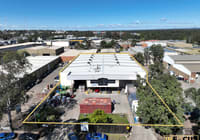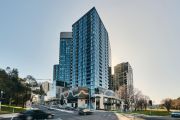
SMEs underpin growth in regional leasing markets
Small business activity has been central to helping prop up regional office leasing markets, according to industry experts.
Information released by the Property Council of Australia reveals many regional centres performed strongly during the pandemic, reflecting positive change in occupied office stock over the past 12 months.
Tania Moore, senior director at CBRE on the Gold Coast, says regional markets less affected by physical lockdowns during COVID were able to operate more normally than their capital city counterparts.
“We probably had a four-week hold-your-breath period at the start of the pandemic but since then our regional market has performed well because of growth in small and medium enterprise [SME],” says Moore.
“Regionals like us don’t have a high representation of national tenants. There’s a strong dominance of SMEs with their decision makers on the ground in their offices, so they’re more agile in their decision making.
“With SMEs, where the business has 10 to 15 workers, most employees are wearing multiple hats, so work from home is a bit trickier because everybody is covering everyone else.
“Also, these tenants want to make decisions quickly and they don’t want to wait for fit-out – particularly because of supply chain issues and building costs. Fit-outs were taking six to eight weeks, and are now taking eight to 10 weeks due to lack of building materials and tradespeople, therefore more lead time is required to meet timeline expectations for handover.”
Moore says the next 12 to 18 months will see the continuation of the power dynamic shift in favour of landlords in regional areas like the Gold Coast as markets continue to tighten.
“As dynamics turn towards a landlord-driven market, we’ll see incentives start to tighten and rent escalation,” she says.
“Also, there’s not a lot of new stock being built in regional markets due to challenges over the last two years on how the office sector may look post-pandemic.
Any new development typically relies on a significant pre-commitment, which is difficult to achieve in the regions where these markets are dominated by smaller occupiers.
“This lack of new supply additions will support the continued contraction of vacancy based on current demand. Any new supply additions currently being contemplated will take another two to three years to be available.”
Ben Young, leasing agent with Colliers in Geelong, says employees coming back to the office will be key for ongoing strength in his regional centre.
“We’ve had a good start to the year, but the big challenge is the slow return to the office. You get this in a market that is dominated by government organisations,” he says.
“That said, we’re seeing reasonable demand for office space across the board. It’s very mixed on what tenants are looking for. Small business wants 100 square metres and large tenants want 2000 square metres.”
Young says regionals like Geelong – within easy commute of a capital city – are seeing activity from larger businesses looking to set up satellite offices, too.
“They’re looking to shift these satellites into better quality buildings because it’s all about staff retention, lifestyle and the amenity that A-grade buildings offer.
“We’ve seen several businesses look to open satellite offices in Geelong and regional Victoria, which has been fantastic. They’ve all wanted to go to a higher premium office quality, too. We expect that to continue in the future.”
Ed Thwaites, commercial director at Herron Todd White, says the Hunter Region has seen businesses reduce their leased floor areas but use what remains to attract employees back by adding features such as exercise spaces.










